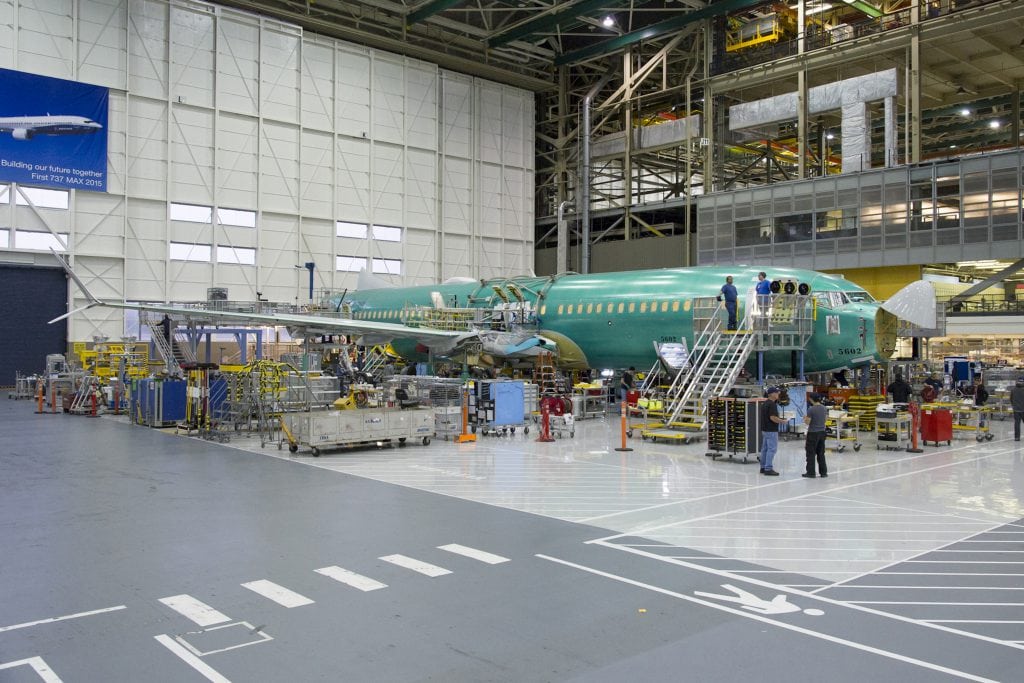
Boeing will adjust the production rates across all of its commercial aircraft programs, with plans to scale up 737 MAX production to 31 per month by the end of 2022, the same year when 747 production will officially come to an end. (Boeing)
Boeing will adjust the production rates for all of its commercial aircraft programs to address airline order cancellations and delays resulting from the impact of COVID-19 on passenger travel demand, according to the manufacturer’s July 29 second quarter earnings call.
Among the changes include a reduction of 787 production to six per month next year and a combined reduction of the 777/777X program to two per month – one unit lower than the rate discussed by Boeing on its first quarter earnings call. Boeing CEO Dave Calhoun confirmed in a note to employees that the 747/767 rates would remain unchanged in the near term, while 747 production will come to an end in 2022.
A 10 percent reduction to Boeing’s global staffing is also being implemented, although Calhoun said the production rate changes could lead to further evaluation.
“Unfortunately, the prolonged impact of COVID-19, the further reductions in our production rate, and the lower demand for Commercial Services means we’ll have to further assess the size of our workforce and ensure we’re aligning with the smaller market. More hard decisions are likely ahead of us, as we try to limit the impact on our people as much as we possibly can,” Calhoun said.
The company saw a net loss of $2.4 billion in the second quarter, including a 65 percent reduction in sales. Between April and June, Boeing completed a total of 20 aircraft deliveries, compared to 90 in the same period a year ago. Calhoun said that although some airline passengers are returning to airports, the fleet groundings, bankruptcies and order cancellations by airlines are still having a rippling effect on revenues.
“While there have been some encouraging signs, we estimate it will take around three years to return to 2019 passenger levels,” Calhoun said in his letter to employees.
Despite Air Lease Corp. Executive Chairman Steve Udvar Hazy recently stating during an FIA Connect 2020 webinar that his firm was ready to purchase 100 Boeing NMA aircraft, the reduction in passenger demand has also led to several recent 737 MAX order cancellations from leasing companies. AerCap was the latest to cancel 15 orders for the MAX, which followed a combined total of 57 MAX cancellations between BOC Aviation and Avolon over the last month.
“There is a customer calling us every day with a desire to want to defer and to deal with the difficult environments that they are dealing with,” Calhoun said during an appearance on CNBC following the earnings call.
The cancellations come as uncertainty remains around the timeline for the 737 MAX’s return to passenger-carrying service. On July 21, the FAA issued its latest update, which includes an plan “in the near future” to publish a Notice of Proposed Rulemaking (NPRM) for an Airworthiness Directive (AD) that will include a 45-day public comment period.
While the FAA has completed the 737 MAX certification flight tests, the agency is still working with Boeing and other civil aviation regulators on approving the return to service. A production rate ramp up to 31 per month is expected for the program by the end of 2022.
Despite the uncertainty on certification and the timeline on the return to service, Boeing CFO Greg Smith told analysts they expect to deliver the majority of the 450 MAX jets – which are currently parked and awaiting approval – within the first year following the final approval.
“I think we’ve been consistent to say, hey, look, we want to get those airplanes delivered,” Smith said. “And that’s the majority of them in the first year. So there will be airplanes that are outside that first year, but the majority will take place in the first year.”